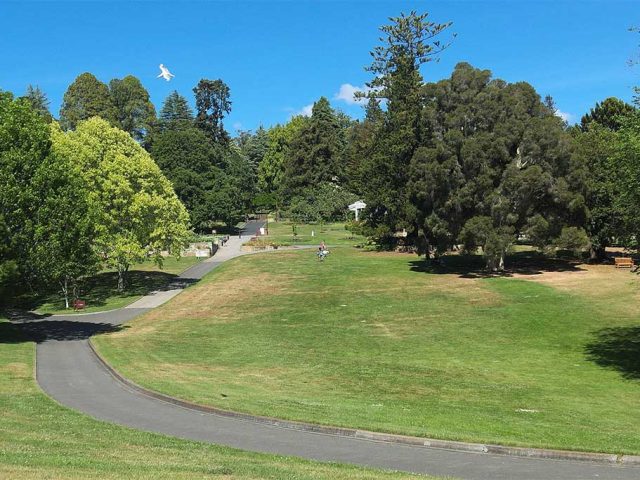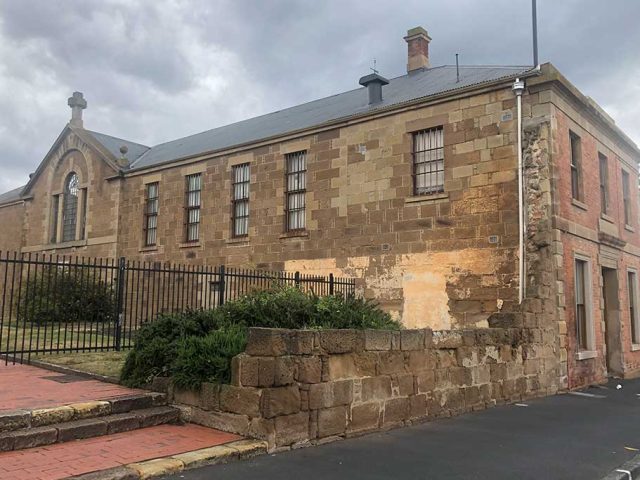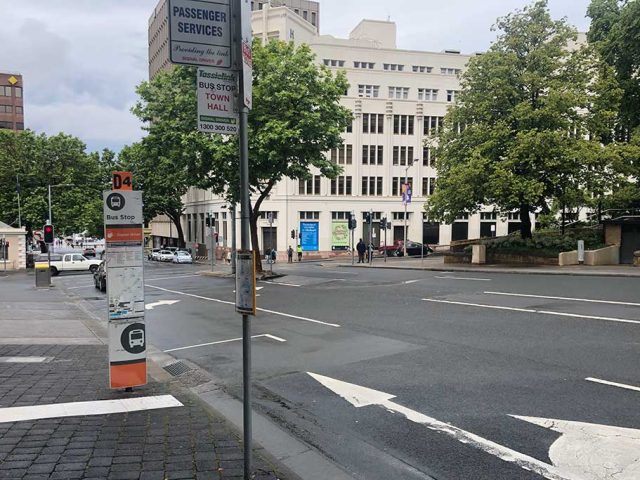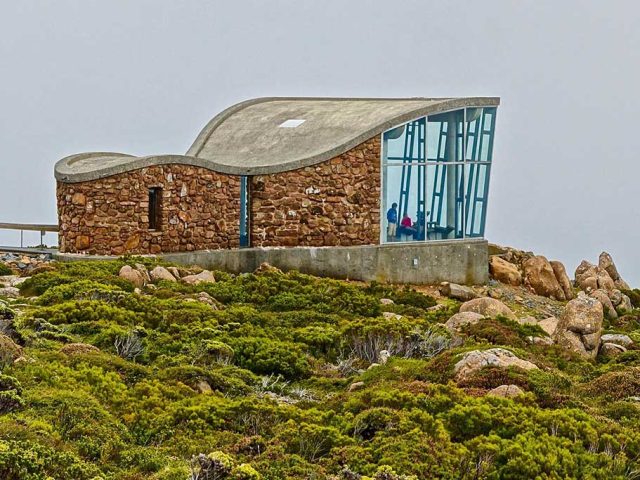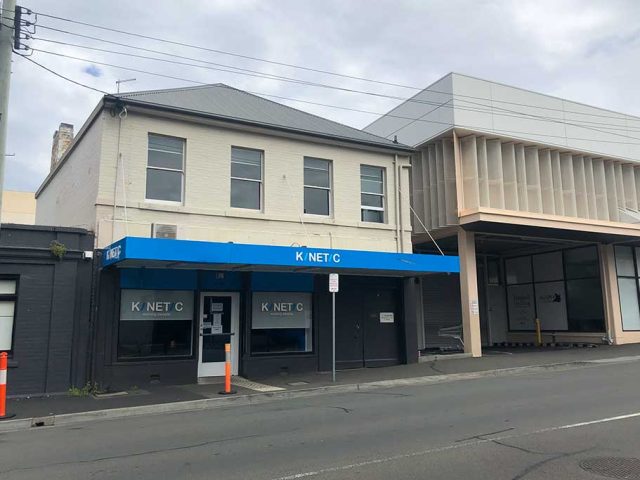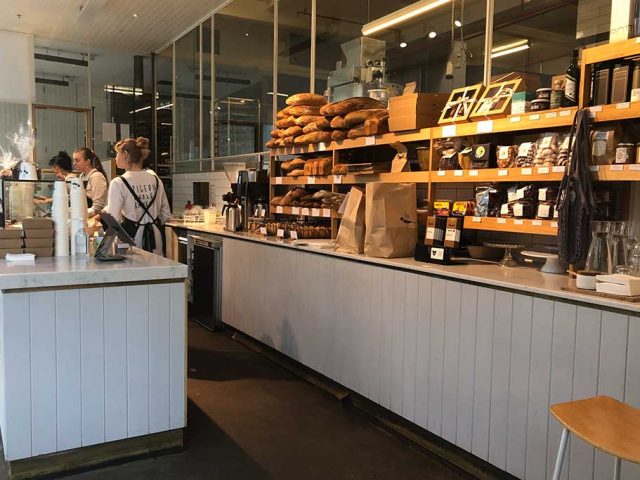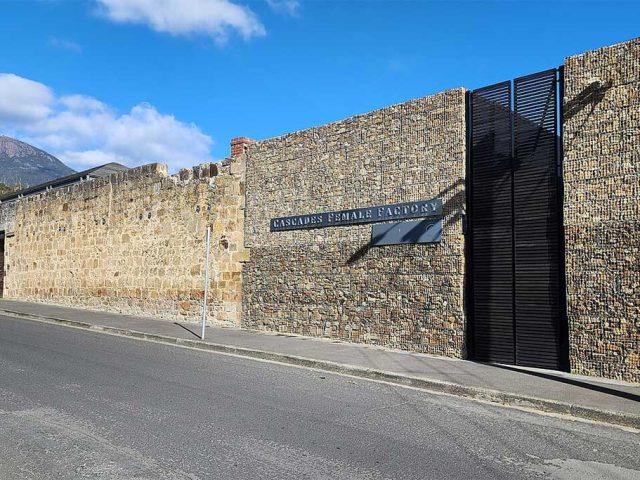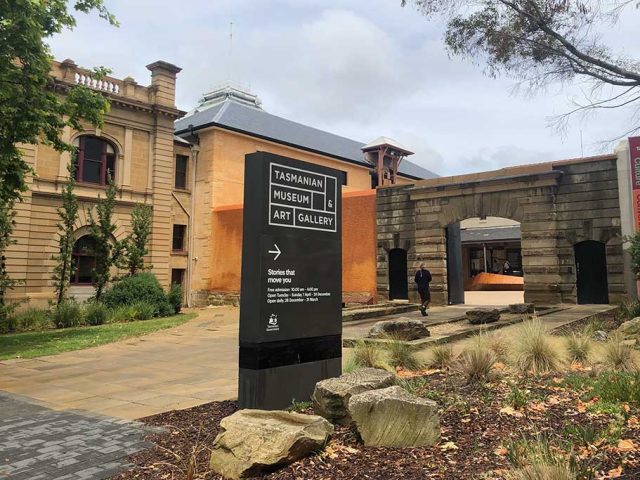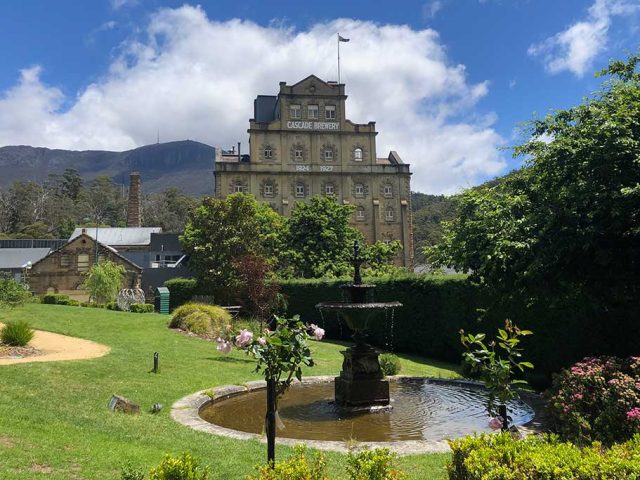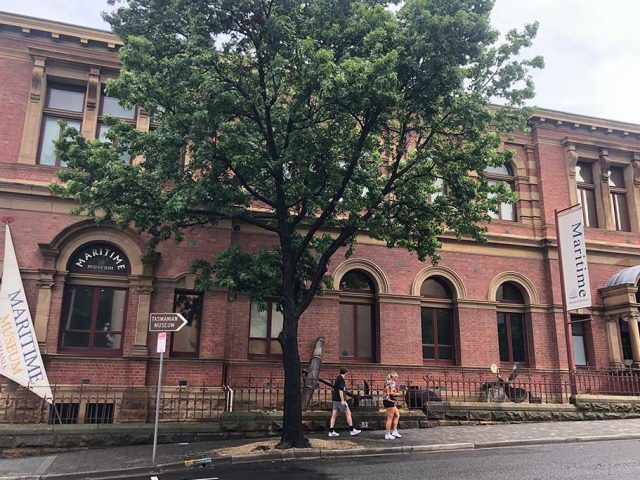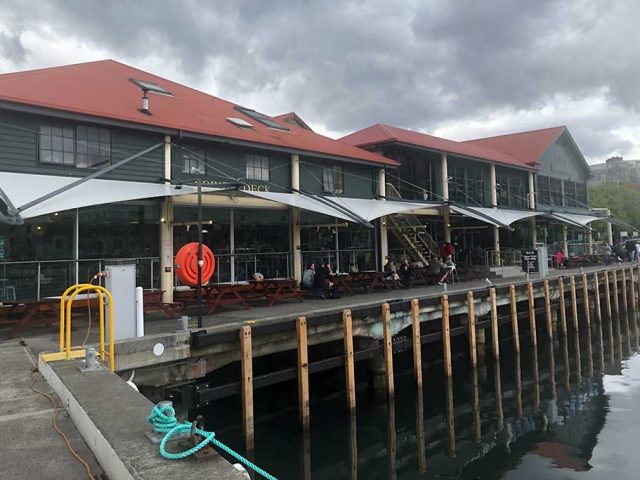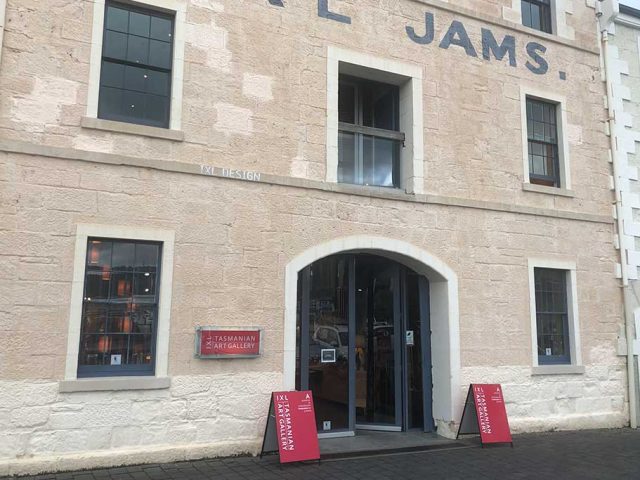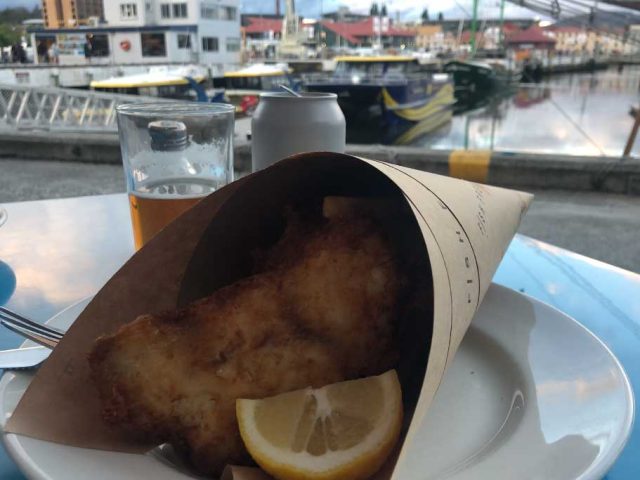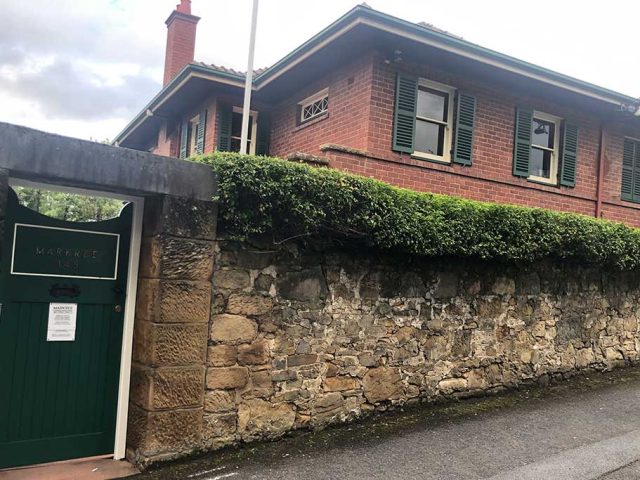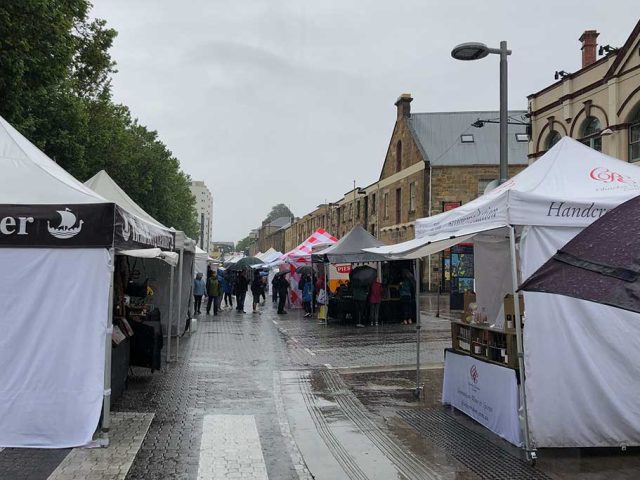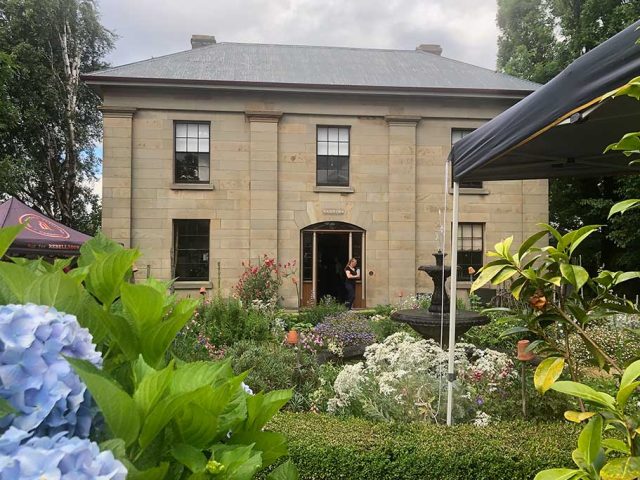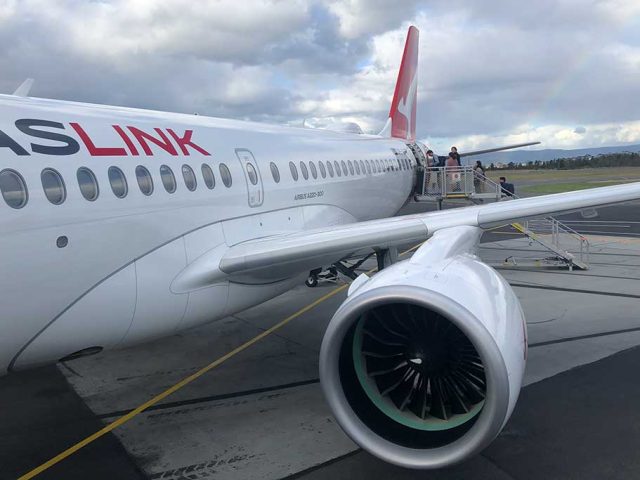MONA: Museum of Old and New Art
Provocative art museum
Located on the Berriedale Peninsula on the outskirts of Hobart, the Museum of Old and New Art (MONA) is an art museum known for its provocative, and sometimes controversial, exhibitions.
Established in 2011 by art collector and entrepreneur David Walsh, MONA has quickly become one of Tasmania’s most iconic attractions. Built largely underground, the museum invites visitors to explore a range of contemporary and ancient art, often addressing themes of life, death and human nature. The museum’s unique architecture and unusual approach to art curation make it a distinctive cultural destination.
MONA is built partly into sandstone cliffs on the River Derwent and spans multiple levels below ground. The architecture enhances the museum’s dramatic, immersive quality. The collection includes over 1,900 pieces, with works ranging from ancient Egyptian antiquities to contemporary sculptures and installations. Through its exhibitions, MONA explores themes often seen as unconventional or taboo in mainstream settings. By challenging norms, MONA has cemented its place in both Tasmanian and international art scenes.

What to see at MONA
A visit to MONA offers an eclectic mix of art forms, blending contemporary and historical pieces. You can expect multimedia installations, sculptures and paintings, as well as an innovative approach to exhibition design.
Although the museum does include some works by well-known artists, it is more a place to see striking and unusual works than works by famous artists.
Instead of traditional labels, MONA uses an app called The O, which you can download to your phone. The O has information on each artwork, including artist details and interpretive commentary. The device also allows visitors to record their reactions to each piece and view a record of their visit later.
The chapel and crypt
Inspired by ancient catacombs, MONA’s crypt features artefacts from antiquity, including mummies and ancient coins. There is also a chapel, which is sometimes used for performances and installations exploring religious themes. This contrast of ancient and modern artworks invites visitors to contemplate the spiritual aspects of human life.
Signature pieces
Notable pieces include Cloaca Professional by Wim Delvoye, also known as the poo machine, which recreates the human digestive system. Another notable work is Kryptos by Marina Abramović, which explores themes of memory and interaction. The artworks often stimulate strong responses from viewers, highlighting MONA’s dedication to sparking conversation.
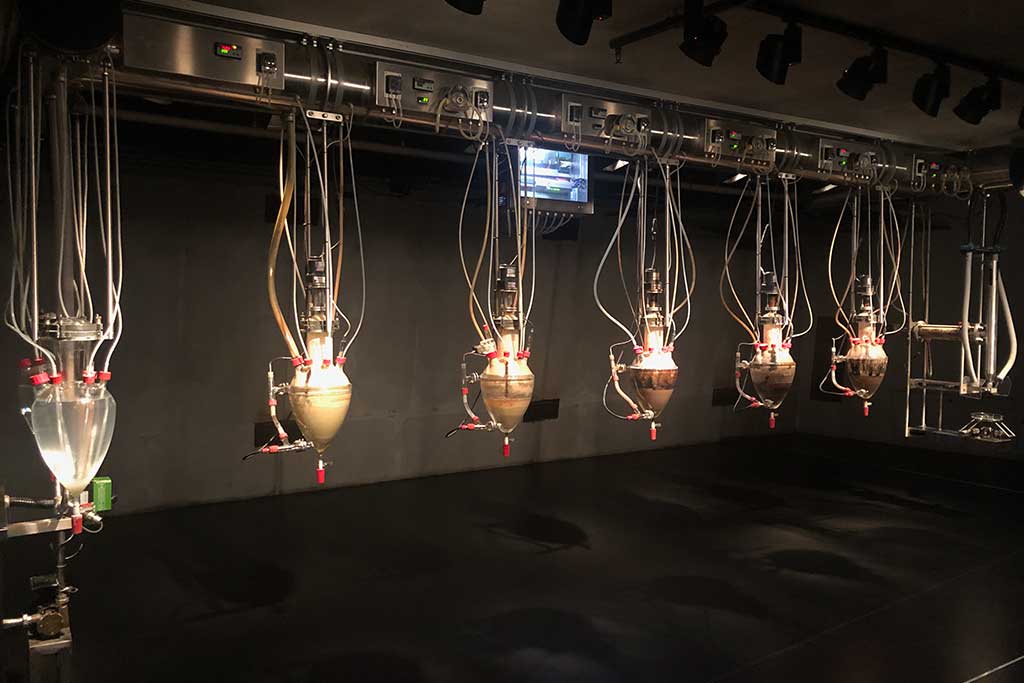
Outdoor art and landscape
The outdoor areas feature large-scale sculptures, seating, and gardens. The museum’s setting on the riverbank provides views of the Derwent and the surrounding countryside.
Temporary exhibitions at MONA
MONA’s collection is ever-changing, as works are frequently rotated and new installations are added. Exhibitions are often curated to provoke conversation, and past exhibitions have addressed themes from human mortality to environmental degradation.
Current and planned exhibitions include:
Arcangelo Sassolino
This exhibition (until 6 April 2026) presents new and recent works by Italian sculptor Arcangelo Sassolino. Using mechanics and industrial processes, he explores material transformation and physical limits. Steel, glass, wood and rubber are subjected to pressure, heat and gravity. Each piece captures a moment of change. Some works suggest tension or imminent collapse.
Performances and events
MONA frequently hosts events and festivals, including the annual Dark Mofo festival in winter. This festival explores dark themes through music, light installations and performances, creating an alternative cultural event that complements the museum’s character. During the summer, Mona Foma (Festival of Music and Art) showcases a variety of music, art installations and interactive performances.
Visiting MONA
MONA is in Berriedale around 11km north of Hobart city centre. Although you can drive or take a bus, the best way to get here is by ferry. The MONA ferry offers a scenic journey along the River Derwent to the museum’s private jetty. Starting at $28 for the return trip, the ferry is quite pricey, but most people say that it’s worth the money.
The ferry has hourly departures from Brooke Street Pier in central Hobart with the ferry trip taking around 30 minutes. The MONA experience starts as soon as you step on board the ferry with offbeat decor, including sheep and tigers to sit on. The standard return fare is $28, although you can pay $60 for the Posh Pit class, which is like a business class with a private lounge and complimentary food and drinks.
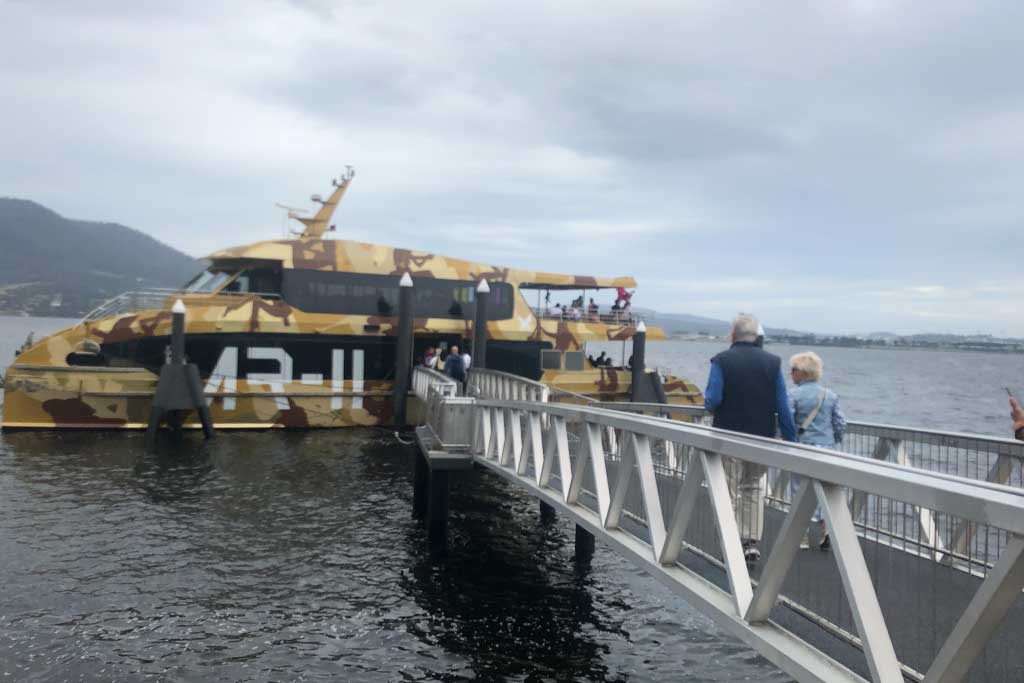
After arriving at MONA, you climb 99 steps to get into the museum, although there is a step-free entrance through a tunnel, if you require it.
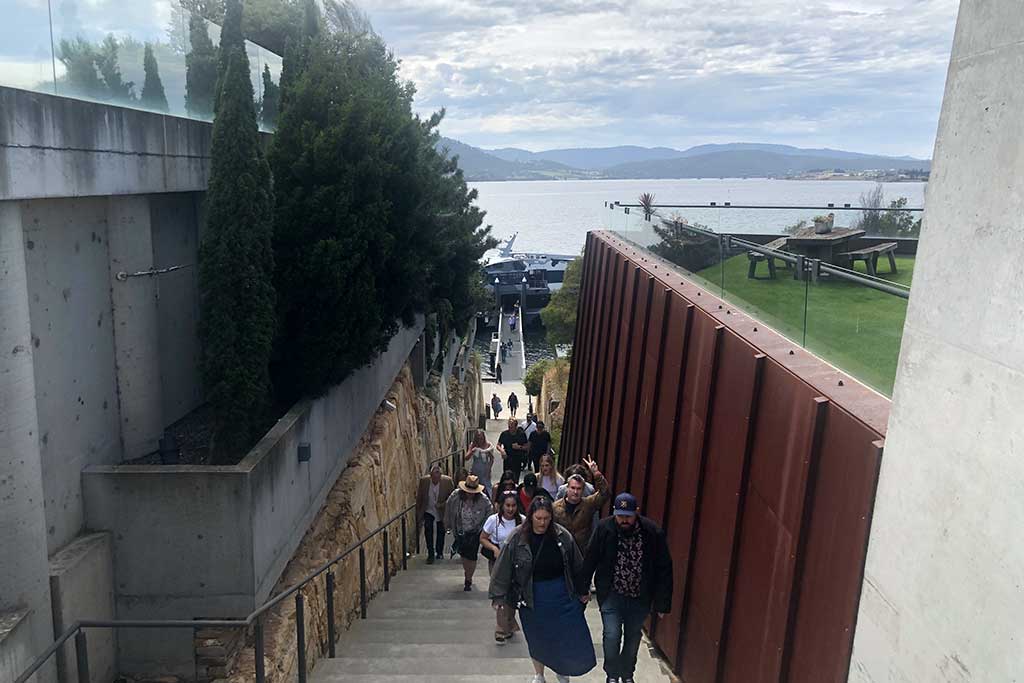
MONA is open Friday to Monday and admission is fairly pricey for an Australian art museum in a relatively small city. However, entry is free of charge for Tasmanian residents.
MONA is wheelchair accessible, with lifts and ramps connecting its underground levels.
Visitor facilities include several on-site dining options, including a restaurant café, and wine bar. There are also gift shops where visitors can purchase books, souvenirs and unique Tasmanian products. The museum grounds are suitable for picnics, and there are several outdoor seating areas available.
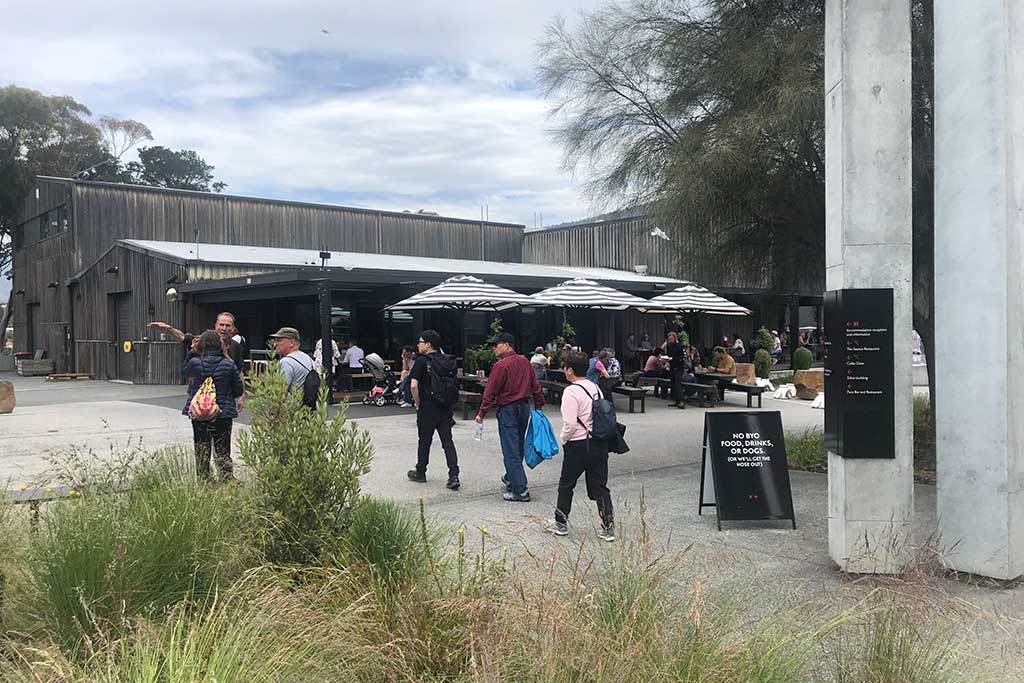
Allow at least 3–4 hours to see the exhibits inside MONA, although it’s best to allow a full day, taking travel time from central Hobart and time for lunch in one of MONA’s restaurants into consideration.
We may earn a small commission if you book after clicking the links below.
655 Main Road, Berriedale TAS 7011
Ferry from Brooke Street Pier Bus 510, 520, 522 and X20 (stop: MONA)
Website mona.net.au
Admission $39, concessions $33, children (12–17) $17, children (under 12) free, free for Tasmanian residents
Ferry fare standard class $28 return, Posh Pit class $60 return
Open Mon 10am–5pm, Fri–Sun 10am–5pm

